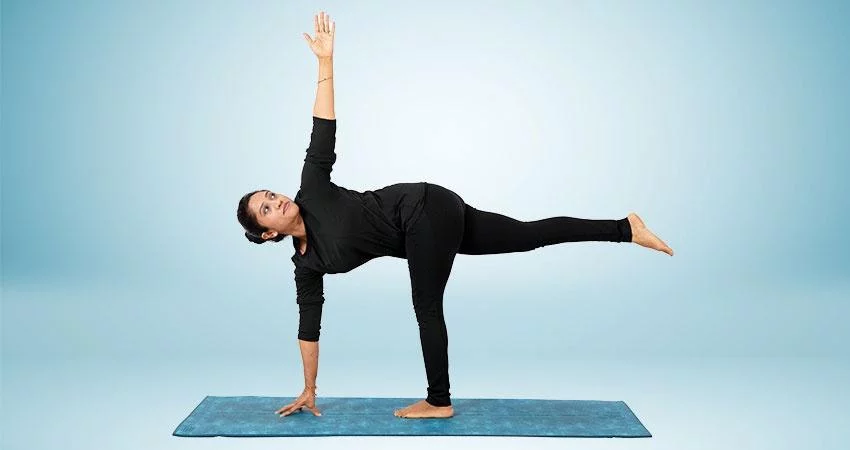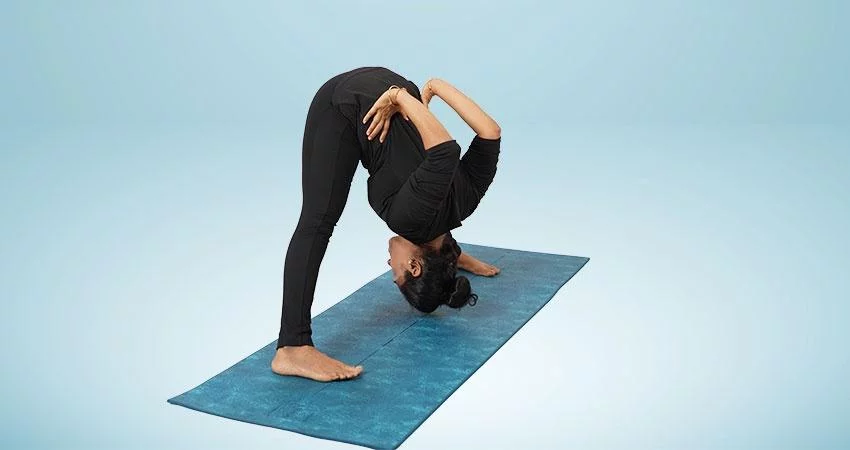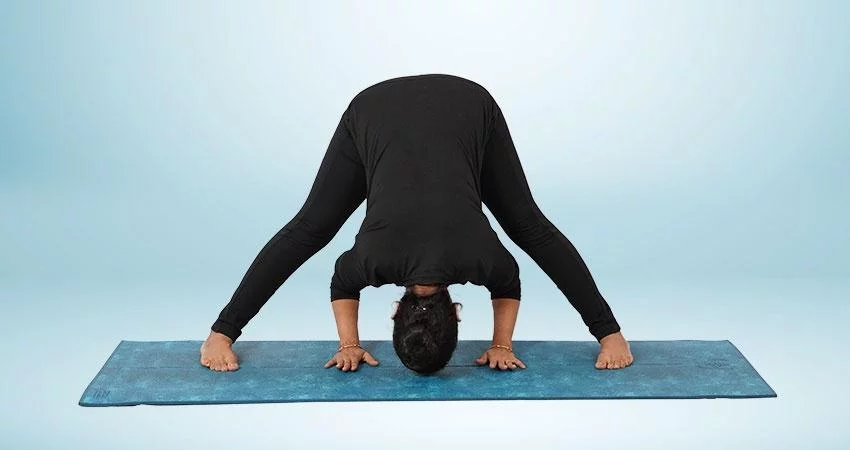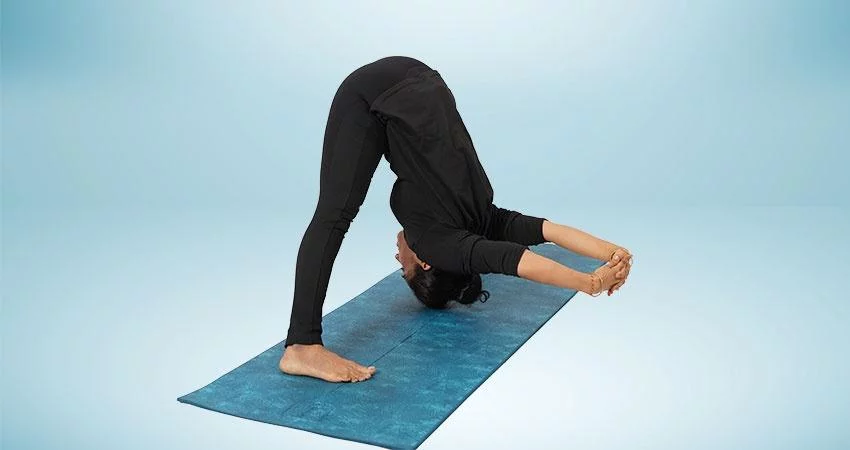Parivritta Ardha Chandrasana (Twisted Half Moon) is an advanced level asana. Twisted Half Moon Pose, enhances balance and coordination, opens the upper back and chest, stretches and opens the hips and legs, and massages the abdominal organs, which is good for digestion and posture. 'Parivritta' means Twisted , 'Ardha' means Half, 'Chandra' means moon and 'Asana' means pose Twisted half moon pose works on Swadhistana Chakra and Manipura Chakra.
Steps to do Twisted Half Moon Pose / Parivritta Ardha Chandrasana
- Stand in Tadasana.
- Left foot one step back. Inhale stretch the hands in line with the legs.
- Exhale, twist and bend forward placing the left hand on the mat, lift the left leg.
- Right hand pointing to the ceiling. Gaze at the right palm.
- Keep breathing while holding the pose.
- Relax, drop the leg, release the hands and come to Tadasana.
- Repeat on the other side.
Tips for beginners
- Focus on opening your hips and maintaining balance.
- Fix your foot and wrist firmly on the ground.
- Prepare your body by practising hip opening asanas like Ashwasanchalanasana, Anjaneyasana, Kapotasana, Eka Pada Adhomukhaswanasana, Baddha Konasana, Parighasana, Natarajasana(Dancer’s Pose).
Benefits
- Increases focus and concentration.
- It builds strength in the ankles, calf muscles, thighs, abdomen, buttocks and lower back.
- It also stretches the shoulders, chest, torso, spine, groins, and hamstrings.
- Regular practice of this asana boosts stamina.
Watch out for
- Sciatica and back injury patients must avoid this practice.
- Avoid if you have any foot or ankle injury.
- People with high blood pressure should avoid this practice.
- Do not push through your limits, this asana will take time to perfect.
Variations
- Parivritta Ardha Chandrasana itself is an intense variation or Ardha Chandrasana.
- You can do this pose on the chair or by the support of the wall.
- You can also bend the knee and touch the toe with your palm.








